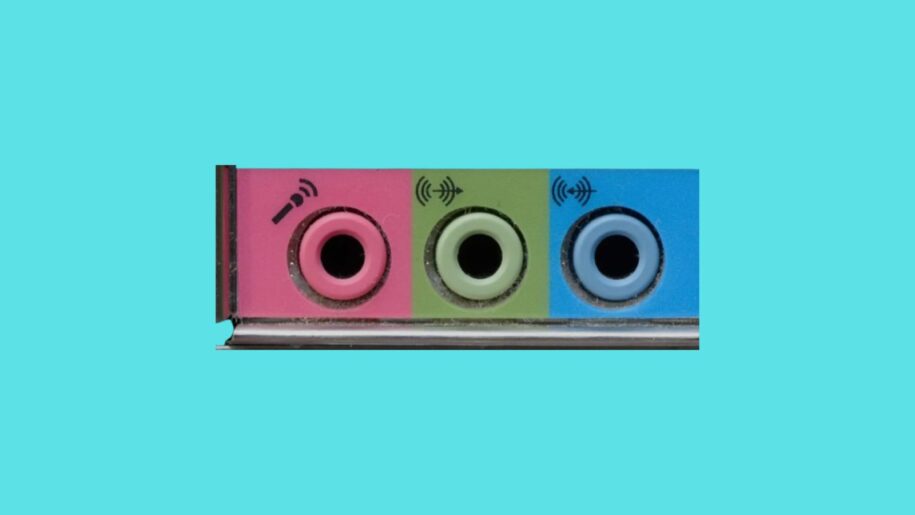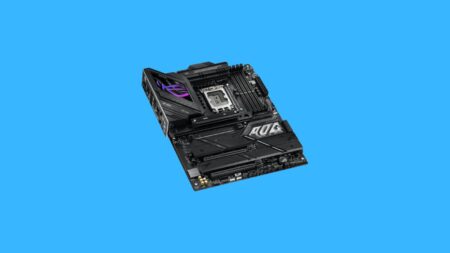
Motherboards are equipped with various ports and slots to manage input and output functions, and audio ports are some of the most important. These ports allow the system to connect to external audio devices like speakers, headphones, and microphones, providing essential sound capabilities for the computer. Whether you’re playing games, listening to music, or recording audio, the motherboard’s audio ports play a pivotal role in delivering a seamless audio experience.
In this article, we will explore the functions of motherboard audio ports, the types of audio ports commonly found on modern motherboards, and the significance of their color coding. Understanding these aspects will help you make the most of your audio setup, ensuring proper connectivity and optimized performance. Let’s dive into the details.
What is the function of the Audio Port on a Motherboard?
Motherboard audio ports play a crucial role in handling the input and output of audio signals, ensuring that your system can connect to and interact with various audio devices. Here are the primary functions of motherboard audio ports:
Multi-channel Audio Support: For users seeking immersive audio experiences, motherboards with multiple audio ports (five or six jacks) allow you to connect a multi-channel surround sound system, such as a 5.1 or 7.1 setup, providing superior sound quality and directionality compared to stereo audio.
Connecting Audio Devices: The primary function of an audio port is to provide connectivity for external audio devices. Whether it’s speakers, headphones, or a surround sound system, the audio ports on the motherboard allow you to link these devices to your computer.
Output Audio Signals: These ports transmit audio signals from the system to external audio devices. When your computer generates sound, audio output ports send those signals to speakers or headphones, allowing you to hear the audio.
Input Audio Signals: Audio ports also allow the system to receive input signals from external audio sources, such as microphones. This enables functionalities like voice recording, video conferencing, or any application that requires audio input.
Supports Various Formats: Motherboard audio ports support several different standards, including 3.5mm, 6.35mm, TOSLink (optical), and S/PDIF (copper). While 3.5mm is the most common, other formats like TOSLink and S/PDIF are used for higher-quality digital audio connections, especially for home theater setups.
Audio Processing: While the physical ports handle the signal transmission, audio processing is typically handled by the motherboard’s dedicated audio chipset. This chipset processes audio signals, enabling features like sound equalization, virtual surround sound, and other customization options to enhance the audio experience.
What are the Types of Motherboard Audio Ports
There are many types of audio ports a motherboard can offer. We have discussed these audio ports in detail below.
3.5mm Audio Jacks
The most popular audio port standard that you can find in 2024 is the 3.5 mm port. This audio jack is the industry standard for most ports and that is why most motherboards only provide 3.5 mm audio jacks at the rear.
Optical S/PDIF Port
The optical S/PDIF (Sony/Philips Digital Interface) port is a high-end port that is only found in high-end motherboards. As obvious by the name, this port uses optical fiber cable for data transmission and that is why it is the finest audio port one can ever use. The connectors of the optical S/PDIF port are called TOSLink (Toshiba Link).
Coaxial S/PDIF Port
The Coaxial S/PDIF port was the standard before the optical S/PDIF port and it used copper connections instead. The copper cable used RCA or BNC connectors for connection.
6.35mm Audio Jacks
6.35mm, also known as 1/4″ audio jacks are more common for professional audio equipment in studios. They are easier to work with due to their large size and are much more durable as well. Thus, they can be used with thicker and longer cables for ease of use. Other than that, they do not provide any sound-quality advantage over the 3.5 mm audio jacks.
What Do the Colors of Motherboard Audio Ports Mean?
The color coding of audio ports on a motherboard helps users quickly identify the specific function of each port. Here’s a detailed breakdown of the most common audio port colors:
- Blue Audio Port: Line In
This port is used for inputting audio signals from external devices. You can connect third-party audio sources, such as a music player, game console, or external audio device, to provide audio input to the system. - Lime Audio Port: Audio Out / Front Speakers
The lime-colored port is typically used for connecting the front speakers of your system. In a surround sound setup (like 5.1 or 7.1), this port is used to output general audio to the front-left and front-right speakers. - Pink Audio Port: Mic In
The pink audio port is used for connecting a microphone to the motherboard. It’s commonly used in systems that require voice input, such as for gaming, voice chatting, or recording. - Orange Audio Port: Central Subwoofer (for Surround Sound)
In a multi-channel audio setup like 5.1 or 7.1 surround sound, the orange port is dedicated to the subwoofer or center speaker. It sends the low-frequency (bass) signals or acts as the main speaker in the system. - Black Audio Port: Rear Speakers (for Surround Sound)
The black port is used for the rear speakers in a multi-channel sound system. It is part of the audio setup for 5.1 or 7.1 surround sound systems, where it helps provide immersive audio by transmitting signals to the rear or surround speakers. - Gray Audio Port: Side Speakers (for 7.1 Surround Sound)
The gray audio port is used for the side speakers in a 7.1 surround sound system. These speakers add an extra layer of surround sound, providing better spatial audio for a more immersive experience.
What Does it Mean If all the Audio Ports on a Motherboard are Black?
In recent years, motherboard aesthetics have evolved significantly, with many modern motherboards adopting a sleek black or white color theme. However, some manufacturers may opt not to use the traditional color coding for audio ports, leading to confusion for users who are unfamiliar with the functionality of each port.
If your motherboard features all-black 3.5 mm audio jacks, here’s what you can do:
- Check the Manual: The most reliable way to identify the function of each port is to refer to the motherboard’s manual. The manual will typically provide a detailed guide to the port functions.
- Look for Labels: Many motherboards include text or small icons next to each port to indicate its functionality. For example, you might see “Mic In” or “Line Out” printed near the respective ports.
In cases where there are no markings or the manual is unavailable, you can also experiment by connecting devices to each port to determine their functions, but referring to the motherboard documentation will be the most efficient approach.


